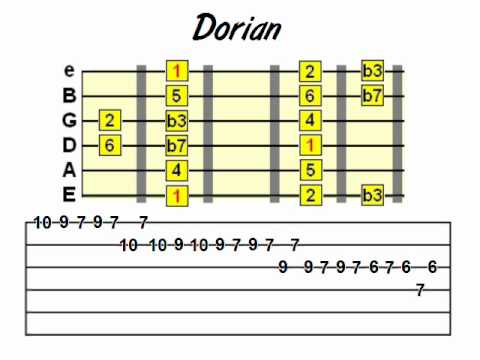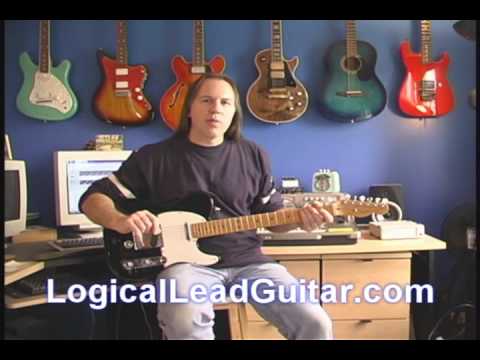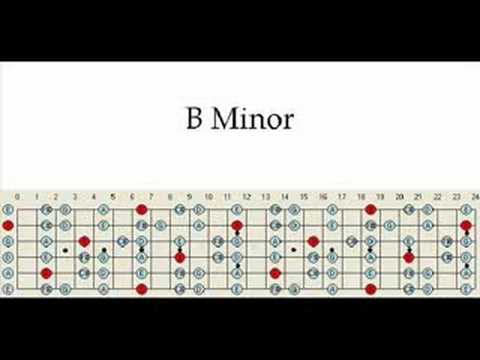Learn the “WHAT” and the “WHY” of the simple concept behind the so-called bebop scales… More lessons on www.jazzguitarlessons.net The bebop scales are derived from rhythms. Historically, bebop musicians started to add notes to “regular” diatonic scales. The added notes permit better “alignement” of the notes with the 4 time signature. For more lessons, please visit : www.jazzguitarlessons.net Video Rating: 4 / 5
You may also like
Guitar Scale Runs – The Basics
Added by Admin 11 years ago
3.16K Views15 Comments0 Likes
www.fretjam.com Learn how to build runs from scale patterns to spice up your guitar solos. This video looks at some simple ascending and descending run patterns using the Lydian, Dorian and ...
Easy Guitar Scale Exercises You Really Must Know!
Added by Admin 11 years ago
2.17K Views10 Comments0 Likes
www.LogicalLeadGuitar.com These guitar scale exercises double as actual riffs, and are used in many famous solos by the likes of Jimmy Page, Stevie Ray Vaughan, Jimi Hendrix, and more... The...
Master the Pentatonic Guitar Scales
Added by Admin 11 years ago
661 Views0 Comments0 Likes
www.RiffNinja.com Here's the A pentatonic minor guitar scale. The pentatonic guitar scales are the most important scale patterns to start with, as they are the most universal scales that you can learn. Pentatonic ...
Guitar Backing Track With Scales Map style of Pink Floyd Money B Minor Scale Lesson
Added by Admin 11 years ago
3.90K Views14 Comments0 Likes
www.guitarmaps.com Download free mp3 tracks .Jam to Pink Floyd Money using the B Minor guitar scales map. This is a great way to improvise your own guitar solo using the B Minor guitar scale...









that was helpful. thanks a lot.
First, it is not A# … the note is Bb! (We’re in the key of F, right?) … then when we add a passing tone, it’s the “B natural” note. You could add passing tones also on strong parts of the beat (if you chose a different note, say). You have to experiment and see how the scale resolve, and what harmony they spell. There’s not a good or a bad way to do it … just let you ears select what you prefer.
I’m not sure that you explained right. For instance, “bebop tone” for C Dominant would be A# not because to add some random notes to fill gap of 7 tones, but because A# is a 7th in C dominant cord(CEGA#). So what are u actually doing, is that you are “building bridge” between to A and tone H in C major scale. But you are right, you can add any passing tone, but only on the weak parts of beat.
Good stuff, is right!
Absolutely. Some passing notes will “bring out” cool (or un-cool) tones in the rest of the scale because of the way rhythms emphasize them. We have to choose wisely!
While I know the author of the video knows this… But you don’t necessarily have to use B, or should I say a major 7th rather than a mixolydian 7th. Different passing tones you can use on a scale. Question you have to ask yourself is, what other scales or chords you want to use in your song. Try selecting a passing tone that works with you and what you are playing. Something to keep in mind.
Not quite. We are not “adding a B note to C mixolydian” … it’s best to see it as “adding another (passing) note to C mixolydian to make the timing fit the bar of 4/4″. When you’re refering to D minor -vs- D Dorian, you are still within the real of 7-note scales. See if you can change the D minor (natural) to an 8-note scale by adding a passing tone. Anything works, see what fits best.
adding the B on the C-Mixolydian gives a similar touch like converting the simple D-minor scale to a D-Dorian right? its that maj6 note added that makes the difference between Aeolian and Dorian
Great. Very direct and easy to pickup. Less talk and more demo–good stuff. Thanks-you!
Jazz waltz or swing waltz maybe
That is a revelation! Thank you for sharing this!
Thank you for this simple, yet brilliant explanation, going to watch more vids!
Can you explain the fingerings please? Thanks. Great video by the way!
That really made things clique when you explained how the passing note is used to keep the scale in rhythm with the 4/4 time. Every time I would try to play over a Bossa nova backing track I would end up out of time.
Es-137? solid
beautiful tone
Great lesson.
Oops ,I mean 11 tones.
C mixolydian
Ah , just read some of the comments ,
“5 choices to make the scale bebop”.
In the key of C , these would be ,
Db ,Eb ,F# ,G# , B .
These are the other notes in the 12 tones available.
I understand , i love it .
Thanks again.
I’ve just tried this idea using F# (aug 11) , and Db (flat 9) ,
as well as B (maj 7) as the passing tone.
Does the ‘passing tone’ always have to be a major 7th
for it to be a ‘bebop’ scale ?
Thanks m8.
Thanks m8 ,
another ‘gem of knowledge ‘ for my
ever expanding collection.
Yes. In fact what is referred to as “Third Stream” is a mixture of through composed music and the liberty of small ensemble jazz (from the bebop era.) It`s worth reading about it from writers / musicians / scholars such as Gunther Schuller. Musically, Charles Mingus is often referred to as a third stream jazz composer.
I think you are talking about a jazz style called the third stream.
That style has a lot of odd time signatures.
“Time is of the essence”. Thanks for watching!